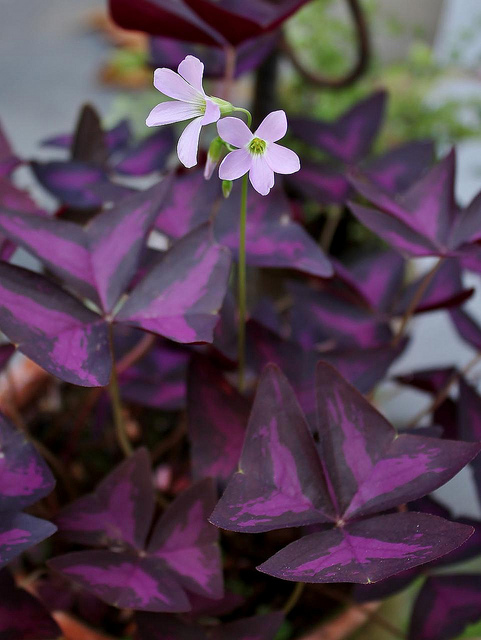Shamrock Plant Care
In the lead up to Saint Paddy’s Day, you’re sure to see Shamrocks in stores. Although commonly referred to as a Shamrock, Oxalis triangularis is related wood sorrel and makes a lovely, easy-care house plant.
I’ve had one of mine well over ten years. It was originally three plants that I potted together, and they’ve survived multiple cat-on-plant crimes, various states of neglect, and moving house. I don’t recommend you let your pets attack Oxalis (it’s toxic to cats and dogs), and I don’t recommend you neglect it either — but my point is, this plant stands up to a lot and bounces back.
The green variety have leaves that are bright green on top, and light purple to deep burgundy on the underside. The purple variety are a rich burgundy all over; some even have contrasting lighter and darker purples. Potted separately or mixed in together, they’re all beautiful.
Find a sunny spot in your home that gives your Oxalis plenty of bright indirect light — one of the charming features of these plants is their habit of folding their leaves up at night and opening them again in the morning, based on the ambient light. You may notice your plant seeming to lean toward its main light source as well, so you may want to rotate it from time to time.
When it comes to pots, any will do; I happen to think they look especially good in a wider and shallower pot that gives you more surface area for a lush plant. A well-draining soil mix and watering once the soil has had the chance to dry out should give you a happy plant.
When you’re repotting, you might notice something funny about your new plant — instead of a typical “root ball” you’ll see corms that look a bit like little pine cones. Gently dig out all of the corms to transplant them, and don’t worry about which way up you plant them — up, down, or sideways, Oxalis will find a way to grow.
During the growing period, you can fertilize your plant with any all-purpose indoor plant fertilizer. I recommend diluting the fertilizer quite a lot more than is recommended on the packaging because I find they can be sensitive to fertilizers. This is about the only thing that mine are truly fussy about.
You may notice your Oxalis getting a bit raggedy looking and dying back from time to time — don’t worry and don’t give up on it, because these plants experience dormant periods. The foliage will die back, and you should stop watering as frequently and place your plant in a darker area. After a while, you should see new growth popping up and it’ll be time to move your shamrock back into a sunny spot and start watering normally.
If you’ve got questions, want tips and tricks, or just want to show off your new shamrock plant in time for Saint Patrick’s Day, check out HPH on Facebook!



